week 5 - k means algorithm
1/16
There's no tags or description
Looks like no tags are added yet.
Name | Mastery | Learn | Test | Matching | Spaced |
|---|
No study sessions yet.
17 Terms
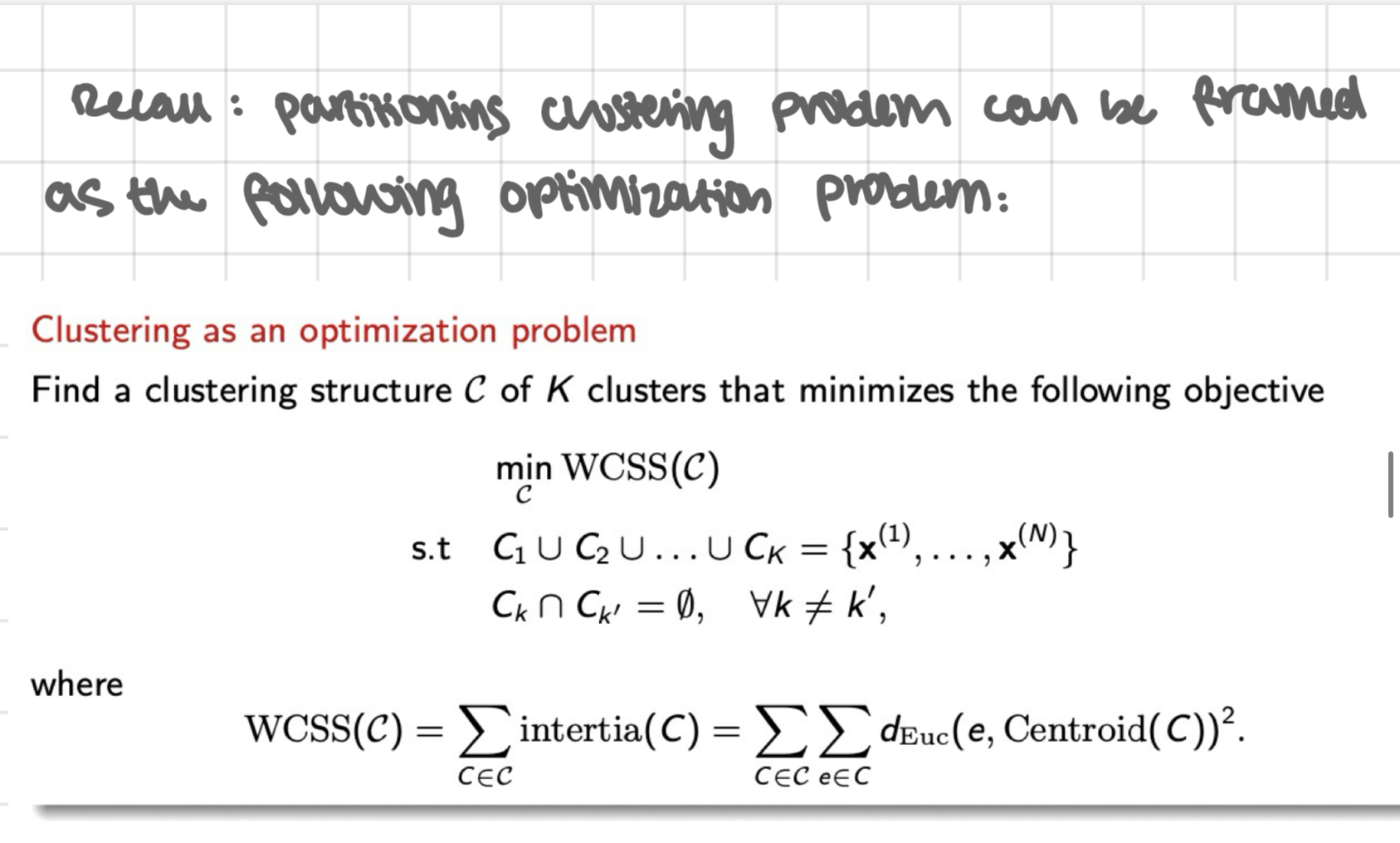
recall
Partitional clustering problem can be framed as the following optimisation problem:
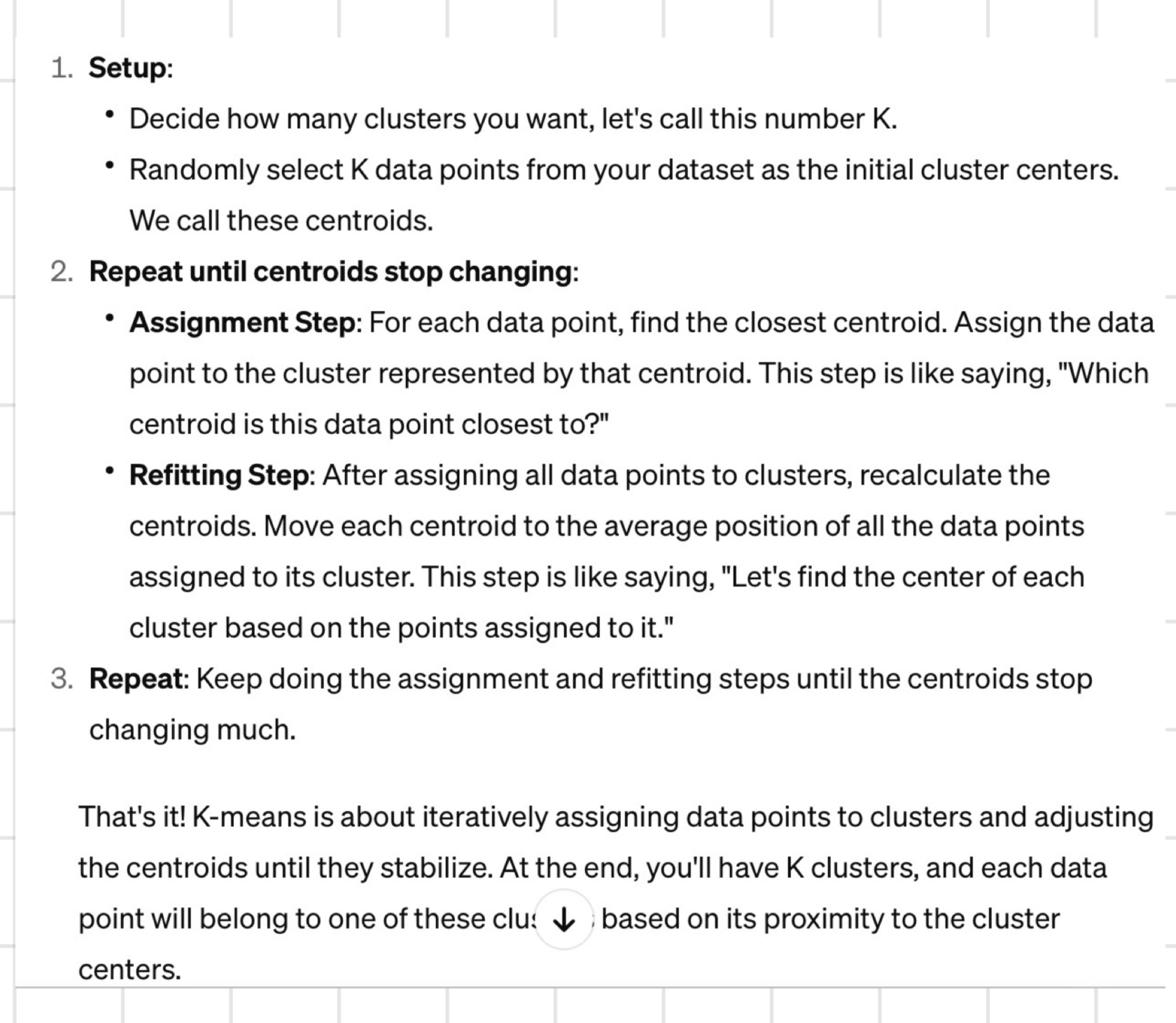
k-means
= iterative, greedy descent algorithm - aims to find sub-optimal solution to optimisation problem in (1)
k-means iteratively alternates between the following 2 steps:
Assignment step: for a given set of k cluster centroids, k-means assigns each example to the cluster with closest centroid
(see pic) = equivalent to fixing the centroids + optimising the cluster assignment to ensure low wcss
Refitting step: re-evaluate + update the cluster centroids
= equivalent to fixing the cluster assignment + optimising the centroids to ensure low wcss
consequently, over iterations, wcss continues to decrease
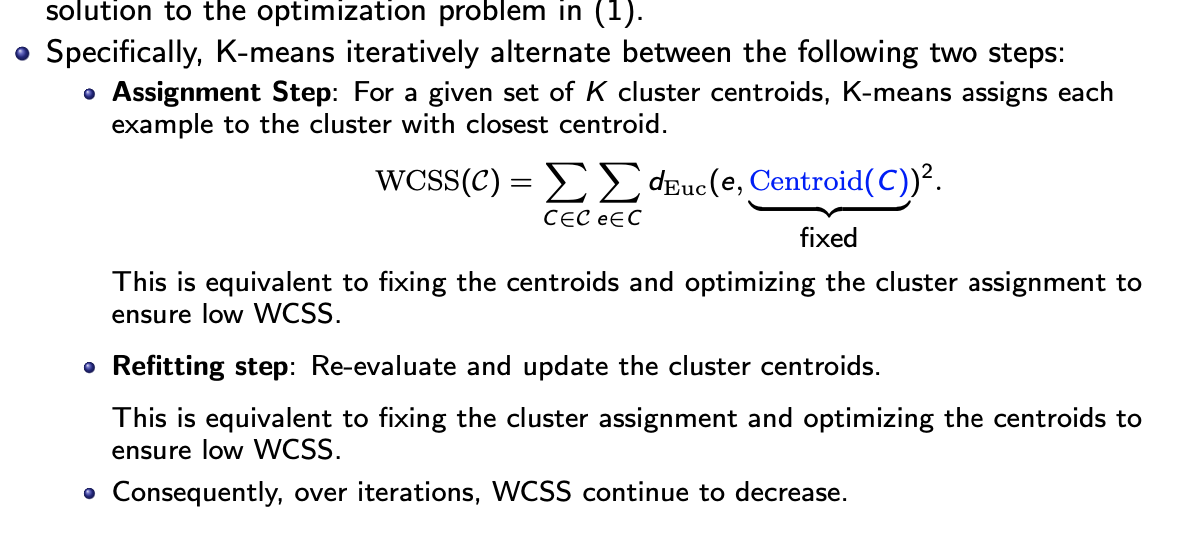
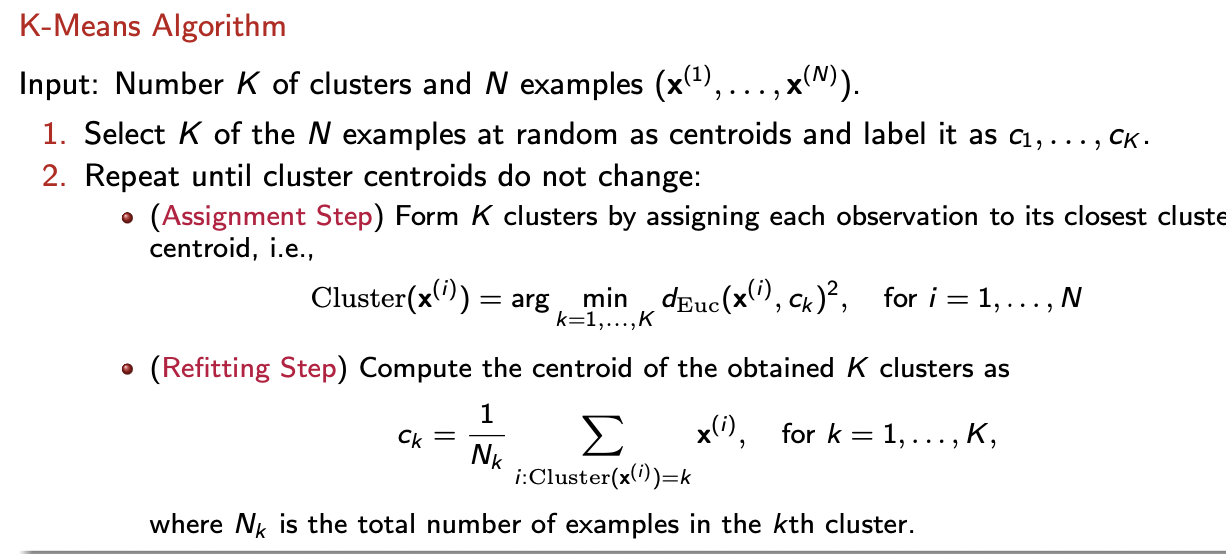
the algorithm: k means algorithm
input: no of k clusters + N examples (x(1),…x(N))
select k of the N examples at random as centroids + label is as C1, …, CK
repeat until the cluster centroids don’t change:
(assignment step) form k clusters by assigning each observation to its closest centroid, i.e. (see pic)
(Refitting step) compute the centroid of the obtained k clusters as ( see pic)
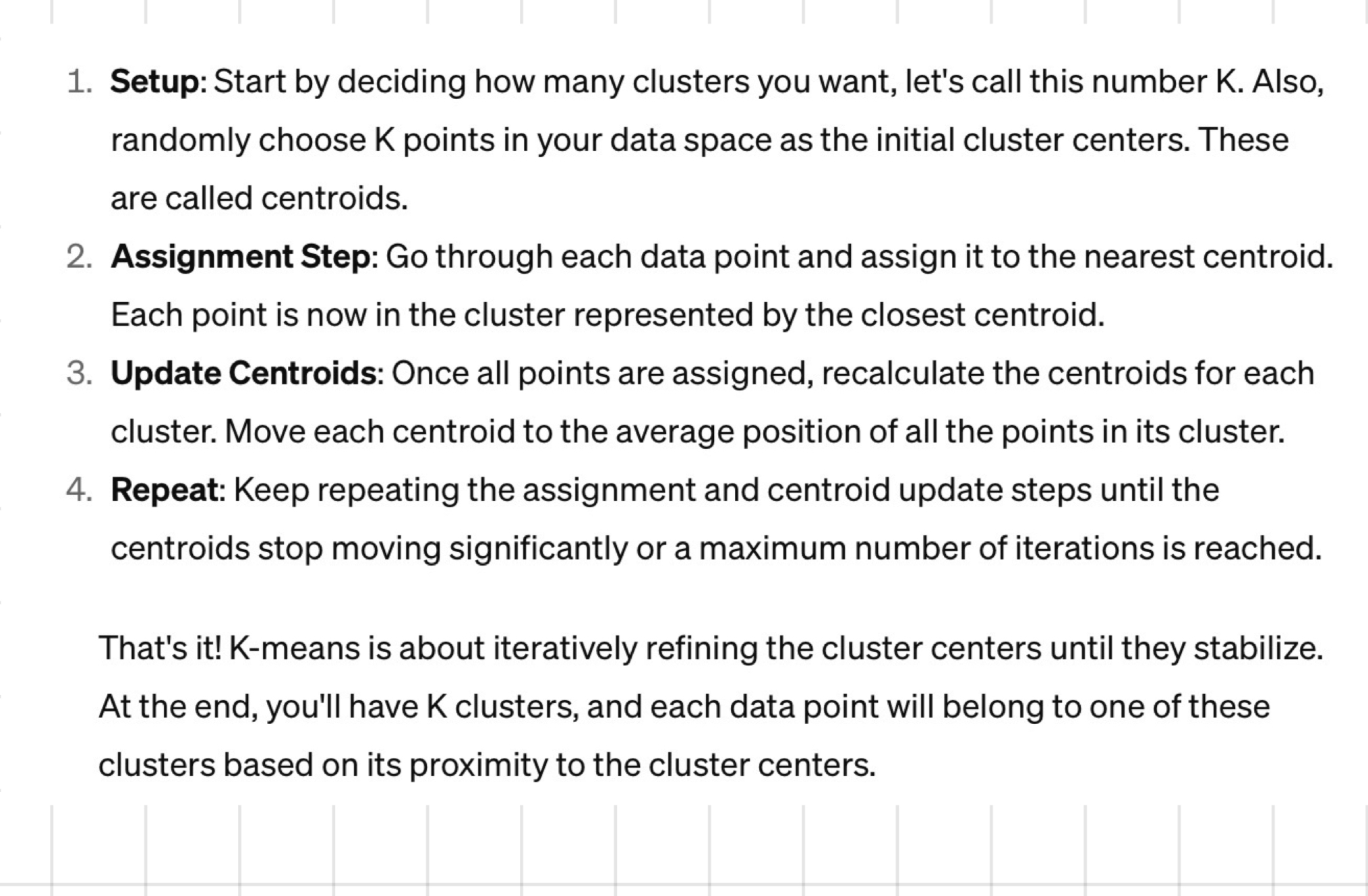
points to note
initial choice of cluster centroids are randomly chosen from the data examples
however, centroids found by k-means over the iterations need not be data examples
cluster assignment = based on squared Euclidean distance
stopping criterion: stop when cluster centroids don’t change
illustration
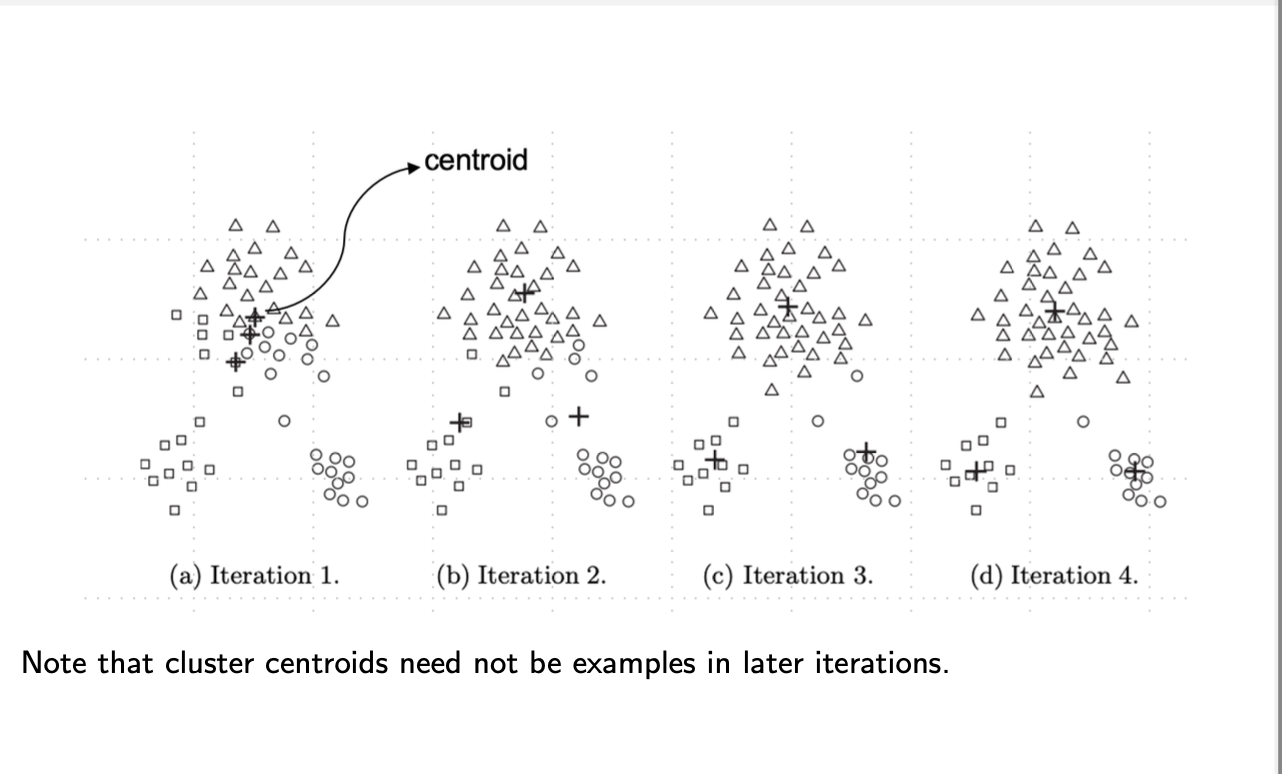
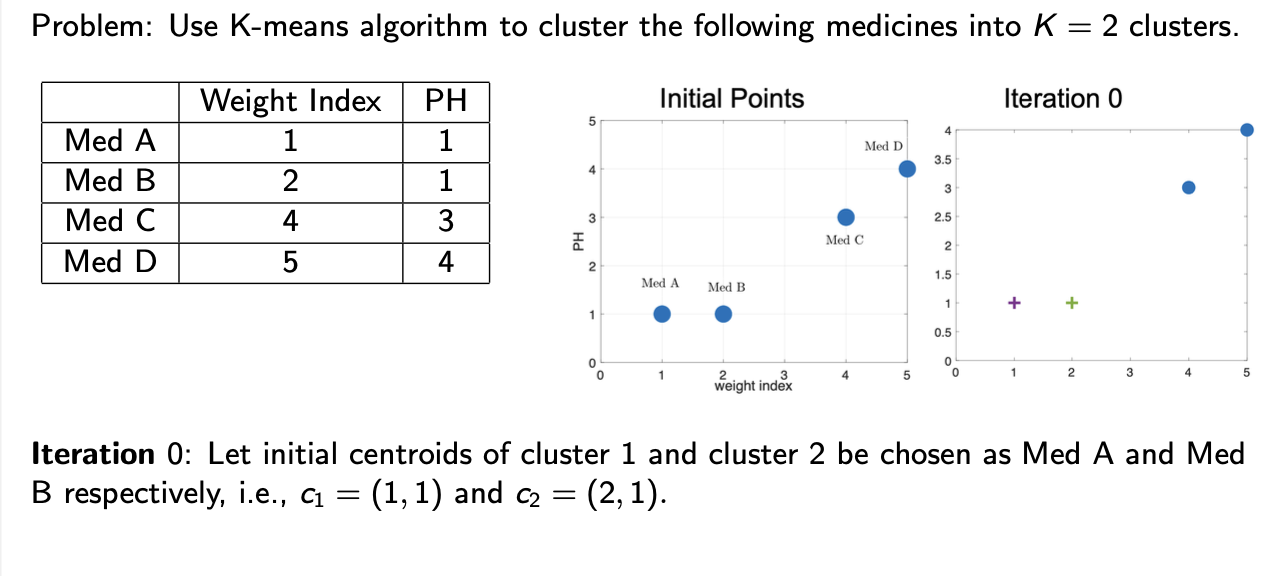
example 1: clustering of medicines
problem : use k-means algorithm to cluster the following medicine into k=2 clusters
iteration 0: let initial centred of cluster 1 and cluster 2 be chosen as Med A and Med B respectively e.g. C1=(1,1) and C2=(2,1)
iteration 1:
calculate the squared euclidean distance of each point to closer centroids to form an object-distance matrix
based on the matrix, assign each medicine to its closest centroid. Thus, medicines B, C and D are assigned to cluster 2
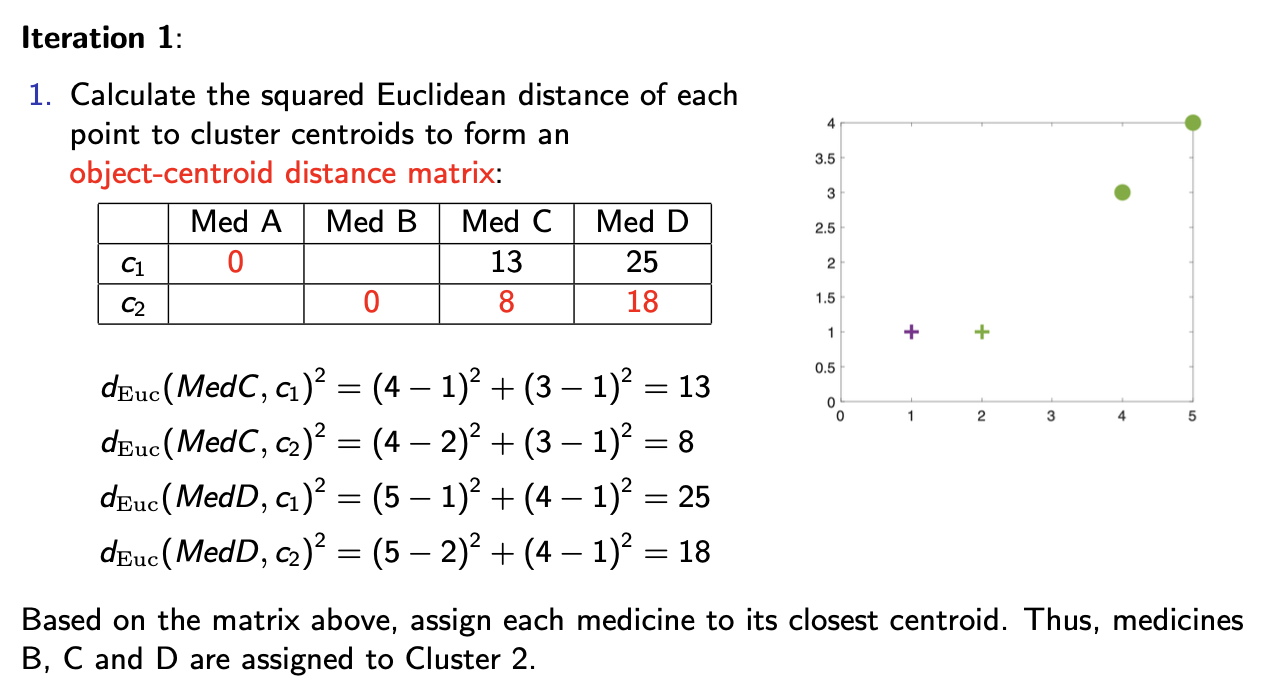
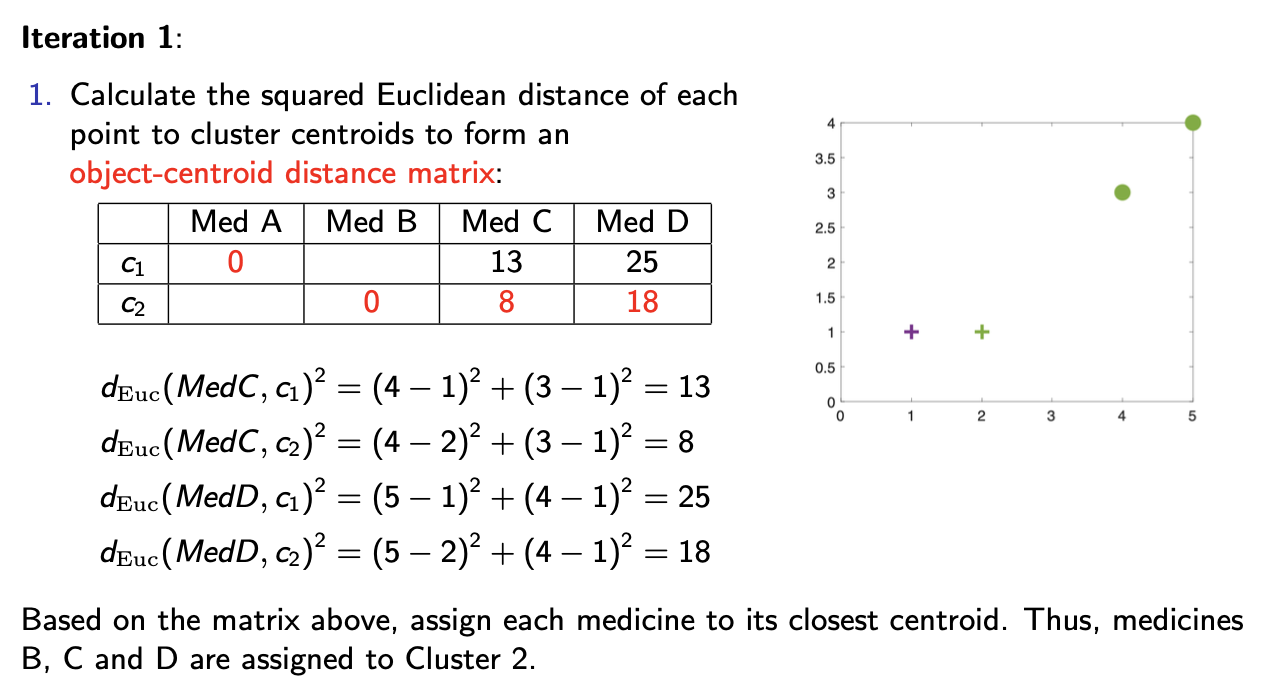
continued
Iteration 1 cont:
update the centroids of the clusters obtained in the previous step → results in: (see pic) - green + symbol
iteration 2:
calculate distance of each point to new cluster centroids → med B is thus moved to cluster 1 - as only 1 away from cluster 1 and 5.58 away from cluster 2
update the centroids of the cluster
iteration 3:
repeat the same steps as before
note that the cluster assignments don’t change
algorithm has converged
converged = reached a steady/stable state - further iterations are unlikely to significantly change the result
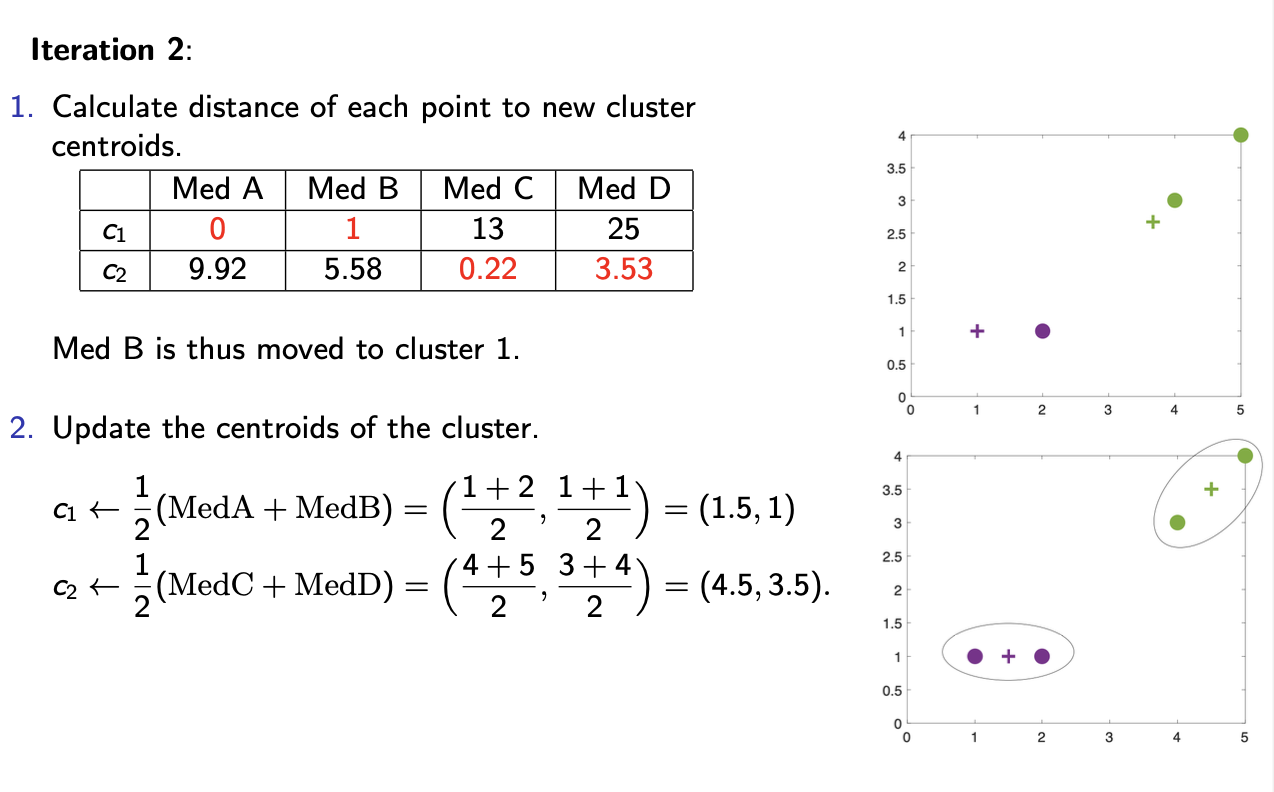
space + time complexity of k-means
- space requirement = modest → only data observations + centroids are stored
- storage complexity = of order O((N+k)m) where m = no.of feature attributes
- time complexity of k-means = of order O(IKm) where I=no. iterations required for convergence
- importantly, time complexity of k-means is linear in N
space complexity = amount of memory required by an algorithm to solve a problem →function of the input size
storage complexity = amount of memory to store the input data itself as well as additional memory used by the algorithm
challenges + issues in k-means
does the k-means algorithm always converge?
can it always find optimal clustering?
how should we initialise the algorithm?
how should we choose the no. of clusters?
convergence of k-means
zt each iteration, the assignment + refitting steps ensure that the wcss in (1) monotically decreases
moreover , k-means work with infinite number (kN) of partitions of the data
above 2 conditions ensure that the k-means algorithm always converges
BUT → optimisation problem of (1) is non-convex
as such, k-means algorithm may not converge to the global minimum, but to a local minimum !!!!
solution: escaping local minima: multiple random restarts + choose the clustering with lowest wcss
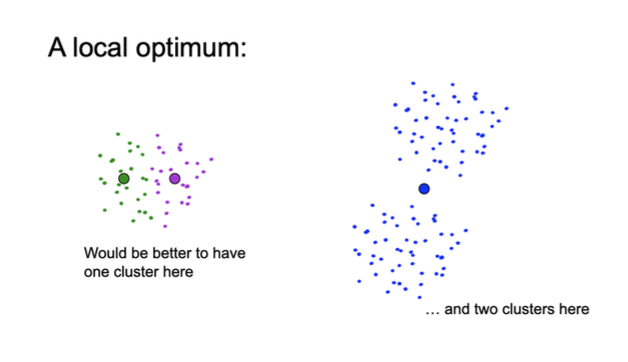
choice of initial cluster centroids
choosing initial cluster centroids is crucial for k-means algorithm
diff initialisations may lead to convergence to diff local optima
k-means is a non-deterministic algorithm : where the outcome is x entirely predictable based solely on the input + the algorithms logic - can produce diff results for the sae input under diff executions
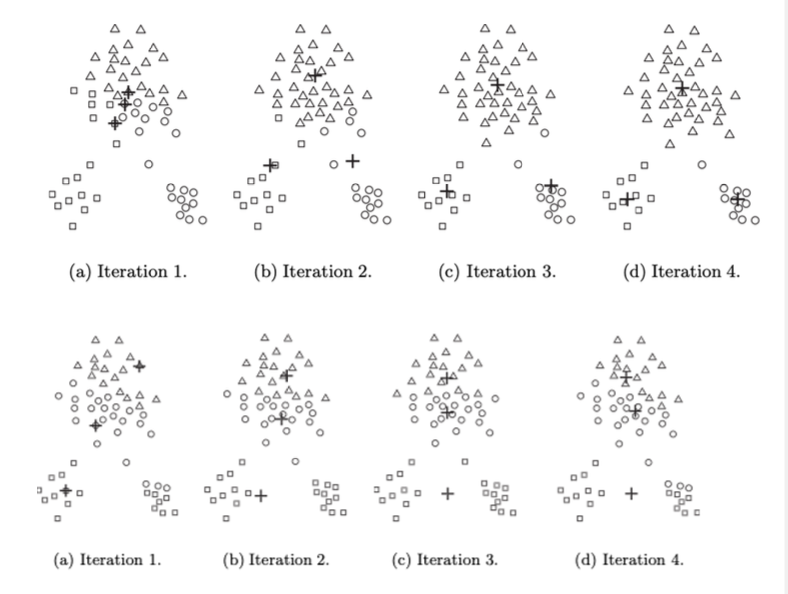

solutions
run multiple k-means algorithm starting from randomly chosen cluster centroids - choose the cluster assignment that has the minimum wcss
specialised initialisation strategies : k-means++
k-means++
choose 1st centroid C1 at random
repeat until k centroids found:
For each data point x, compute the distance dEuc(x, c) = d(x) from its nearest centroid c.
Choose a new data point x randomly with probability proportional to d(x)² as the next centroid.
(Thus, a data point x that is farthest from the nearest centroid is highly likely to be picked as the next centroid)
use the obtained k-centroids as initial centroids for k-means algorithm,
run the k-means
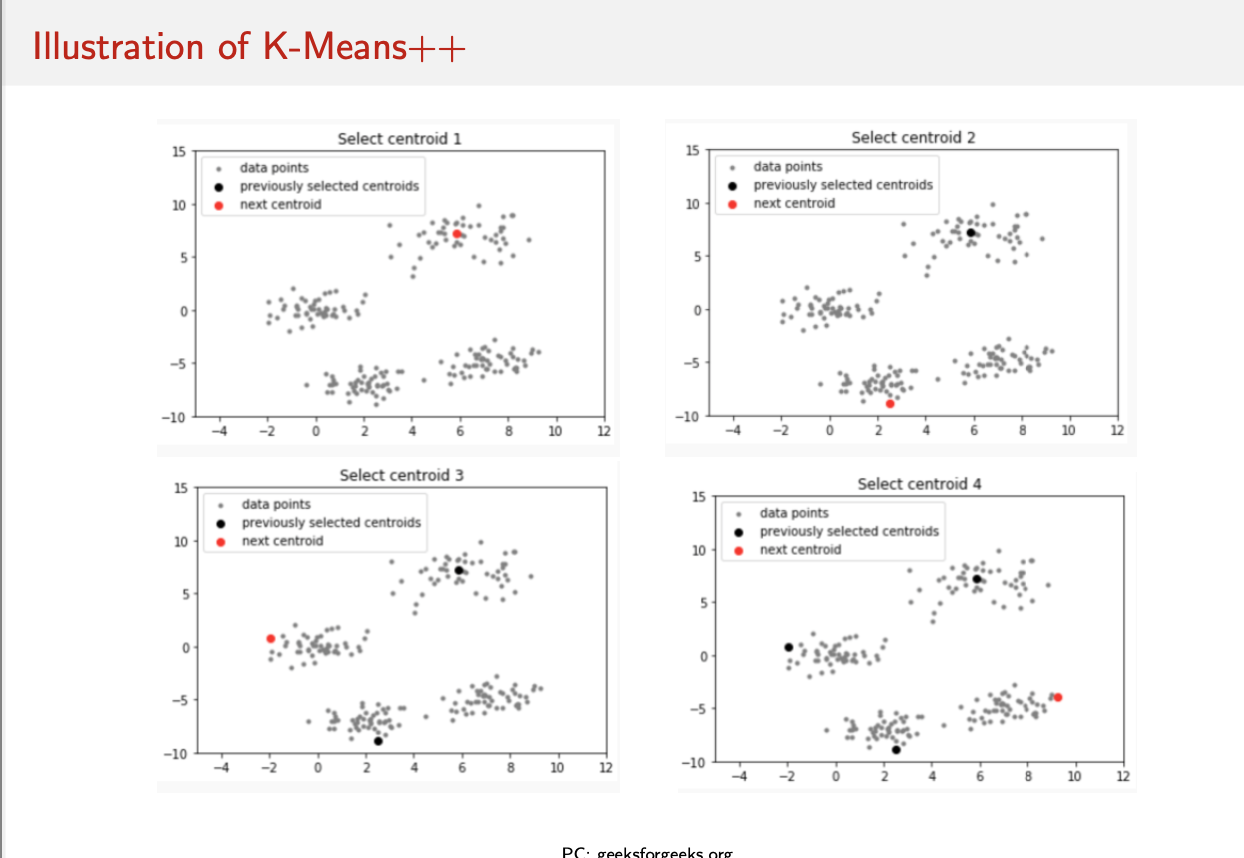
choice of the number of k clusters
conventional approach: use prior domain knowledge
example: data segmentation - a company determines the no. of clusters into which its employees must be segmented
a data-baed approach for estimating the number of natural clusters in the data set: elbow method
elbow method
run k-means algorithm repeatedly for increasing values of k
evaluate the wcss of the obtained clustering structure in each run of k-means
plot wcss(c) as a function of the number k of clusters
optimal k lies at the elbow of the plot
drawbacks of elbow method:
heuristic concept
not easy to identify the elbow
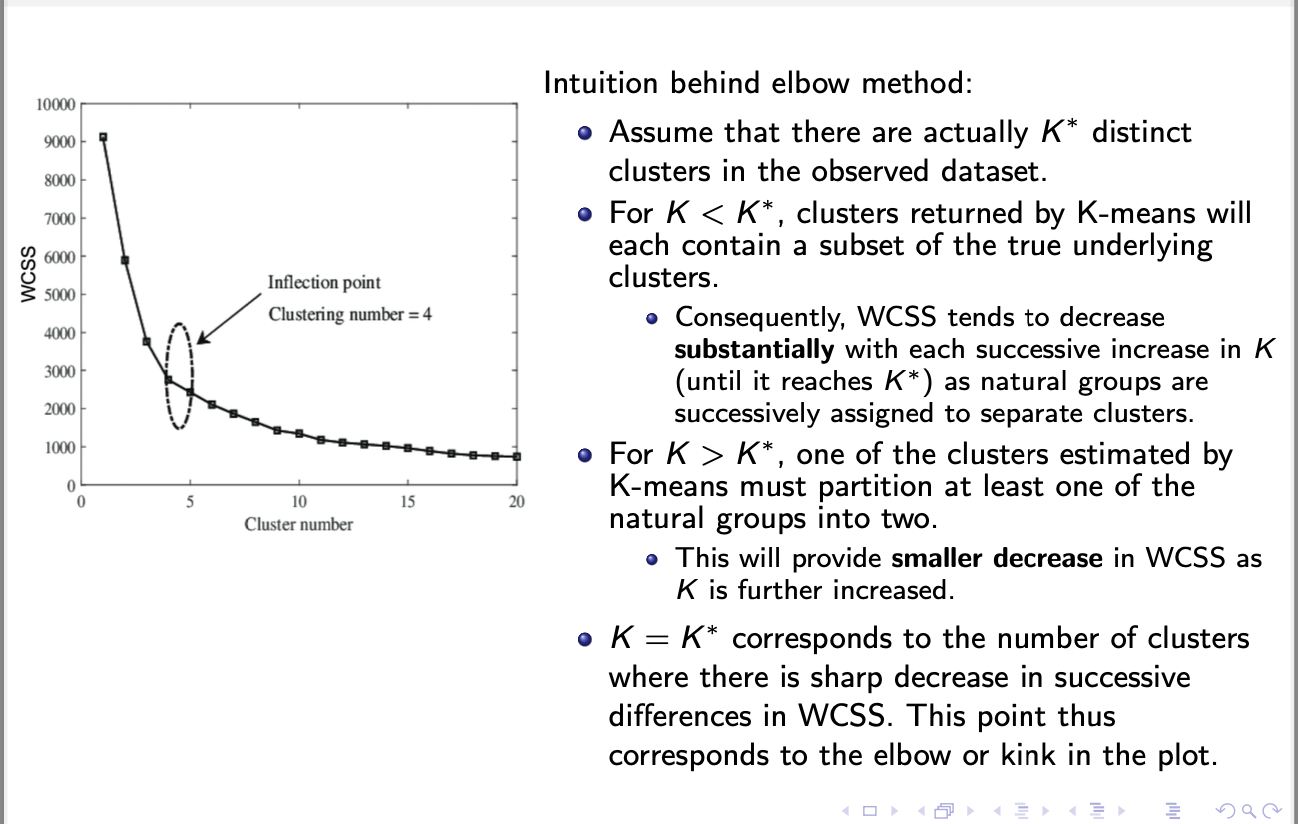
elbow method
when k<the no. of distinct clusters (K*) adding more clusters = substantial decrease in wcss- each cluster will capture a subset of the true clusters = making them tighter + ↓ wcss
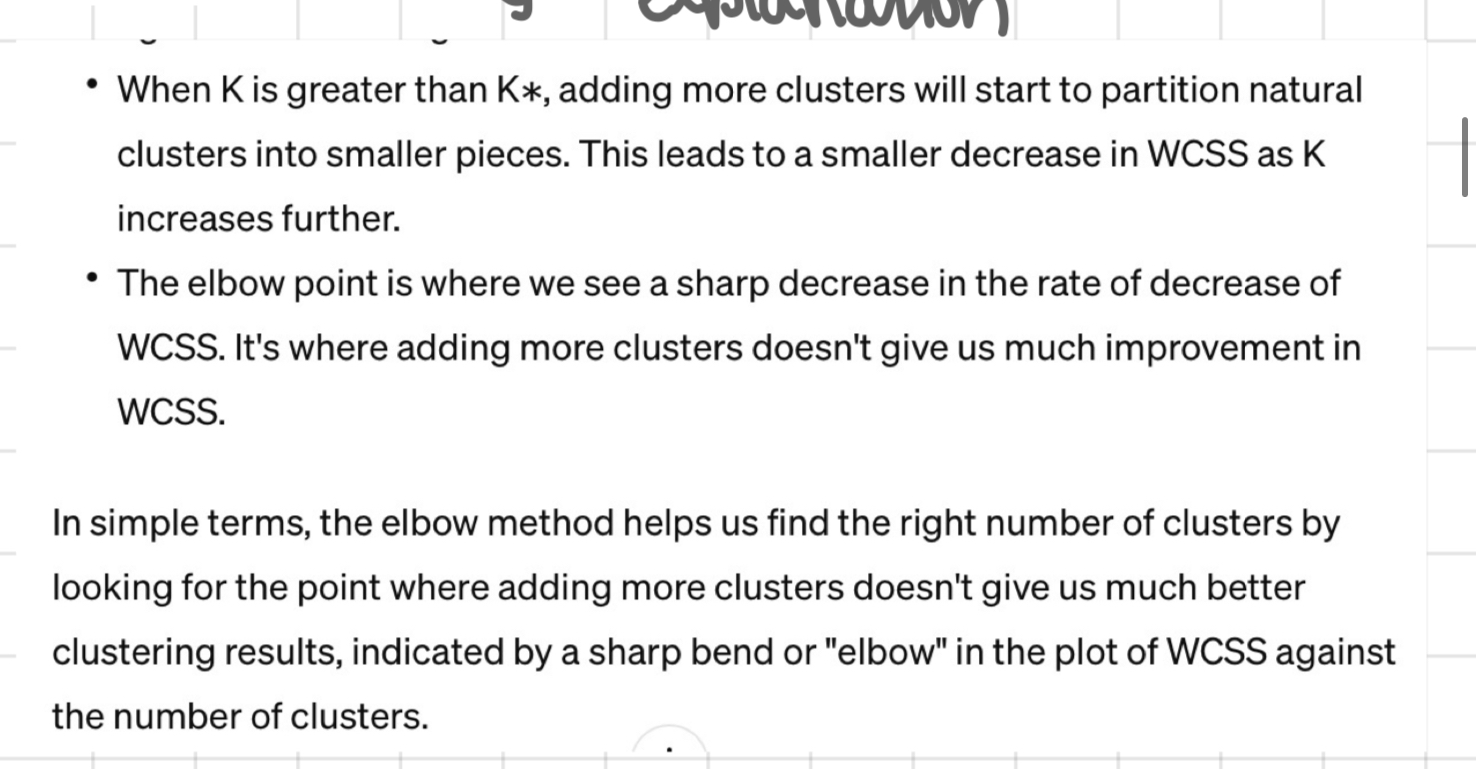
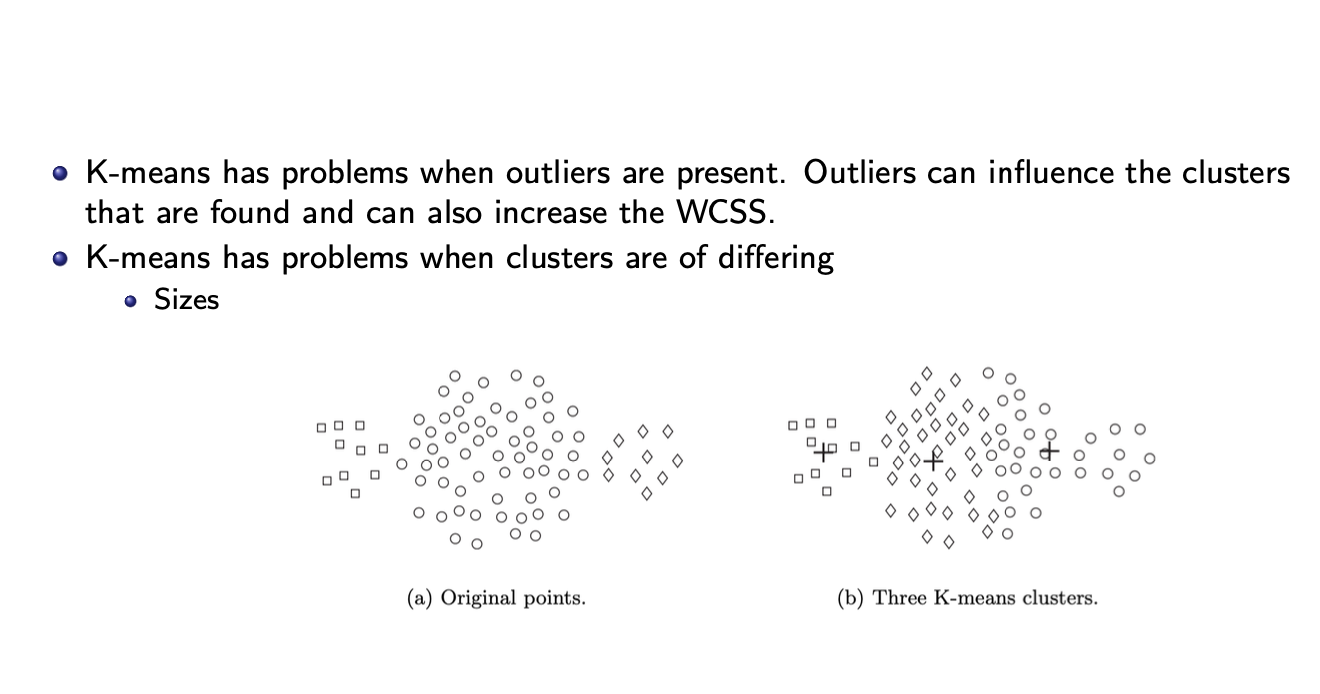
other limitations of k-means
problems when. outliers are present - can influence the clusters that are found + also ↑ the wcss
k-means has problems when clusters are of differing:
sizes
densities
non-globular shapes
one solution = to find a large no. of clusters such that each of them represents a part of a natural cluster. But thwse small clusters need to be put together in a post processing step
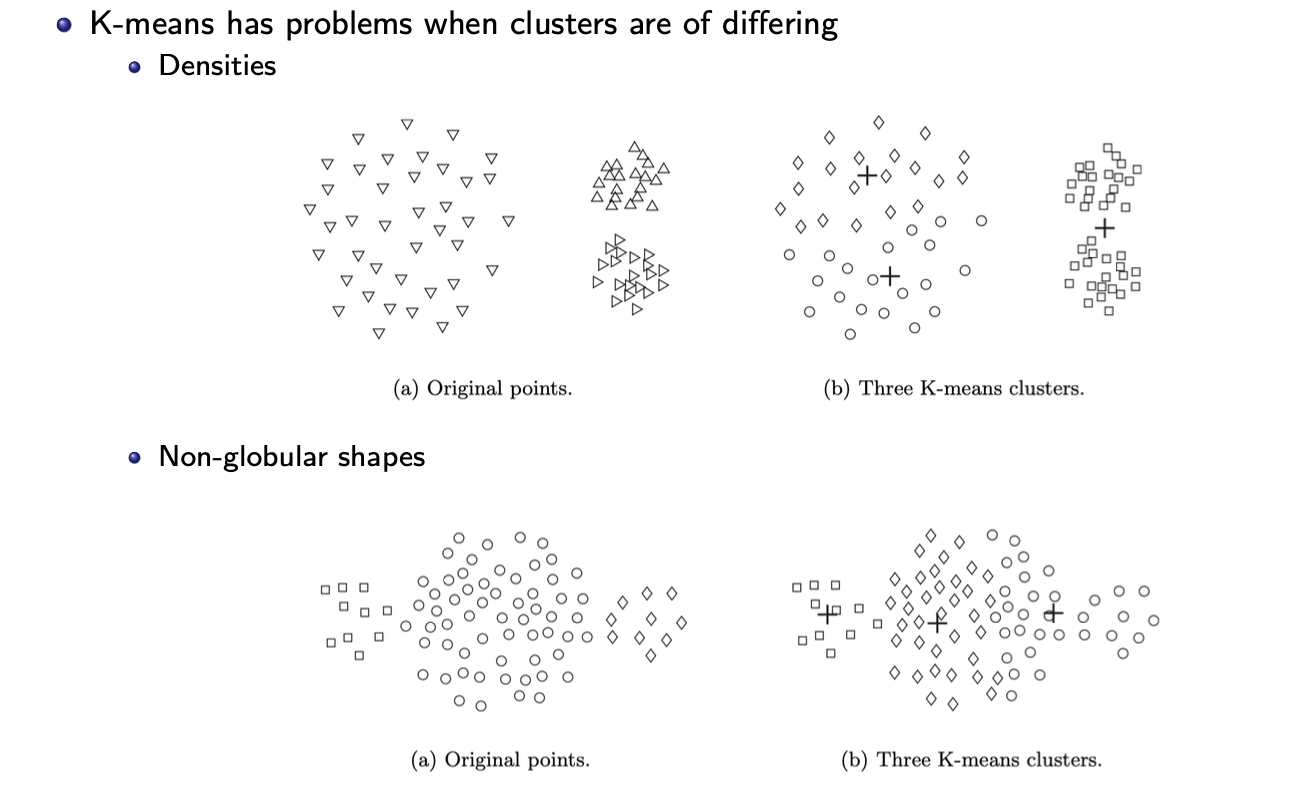
application of k-means
k-means algorithm is a key tool in the area of image + signal compression - particularly in vector quantisation

vector quantisation via k-means
break left image into small blocks of 2×2
results in 512×512 blocks for 4 numbers each regarded as a (feature) vector in ℝ4
run k-means algorithm in the resulting space of feature vectors - clustering process called encoding step in VQ + the collection of centroids is called the codebook
centre image uses k=200 while right image uses k=4
to represent the compressed image, approximate each of the 512×512 blocks by its closest cluster centroid, known as codeword. Then, construct the image from the centroids, a process called decoding .
storage requirements:
for each block, the identity of the cluster centroid needs to be stored
this requires log2(k) bits per block, which equals log2(k)/4 bits per pixel